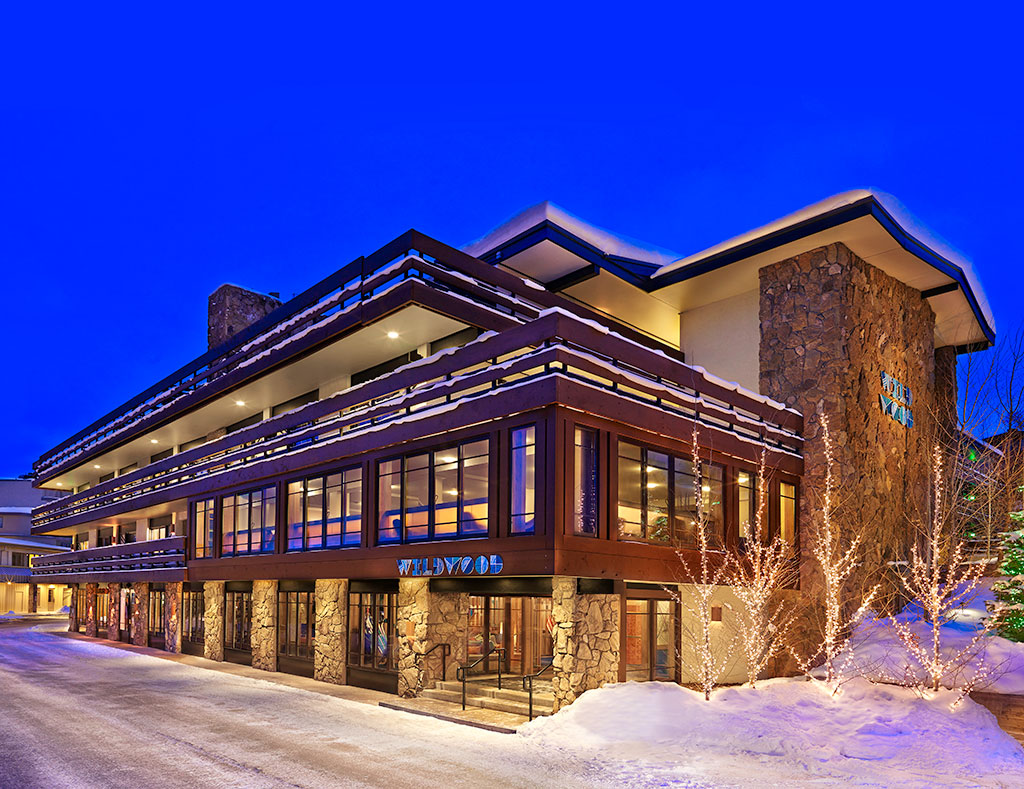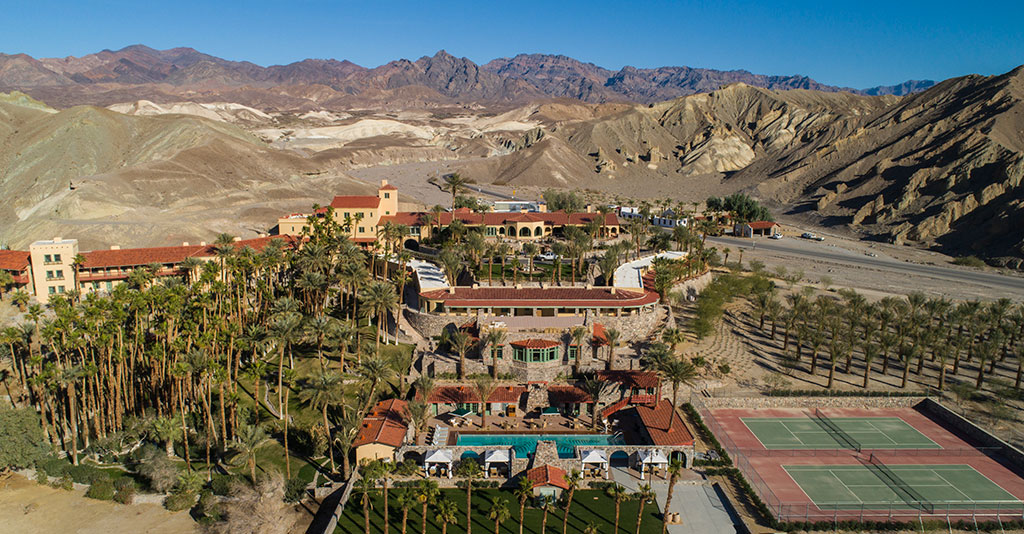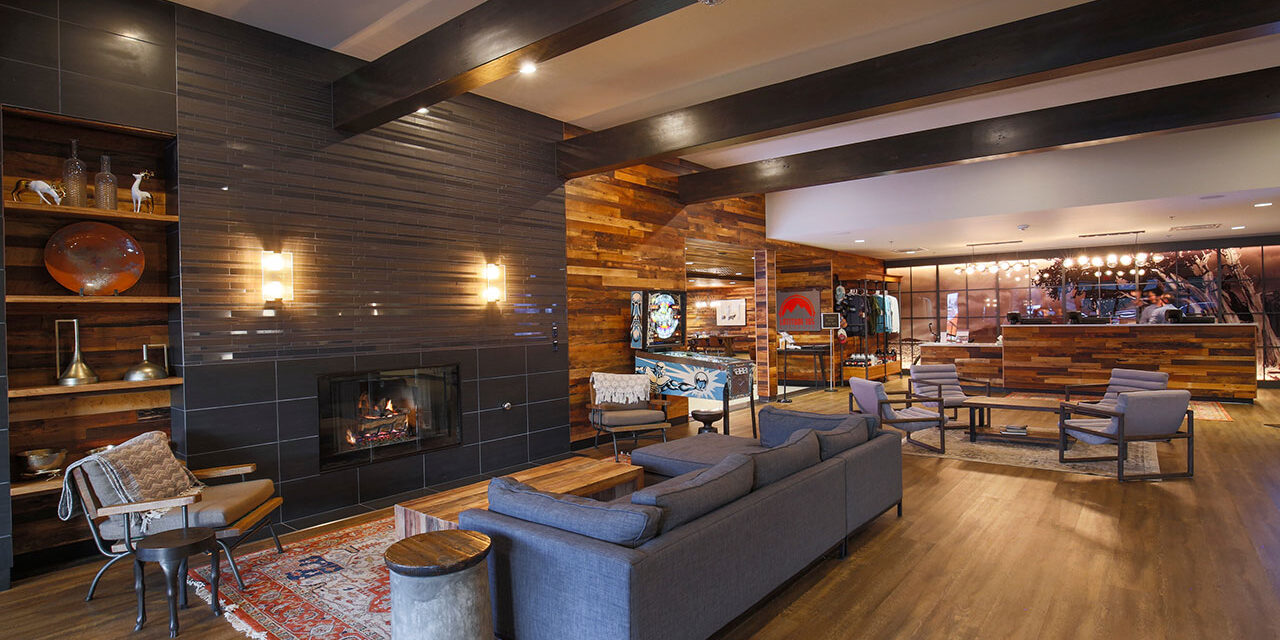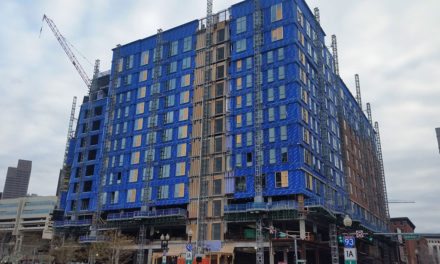As quickly as American culture cycles through fashion trends, fad diets, pop stars and other tastes of the moment, all that fickleness leaves people longing for genuine connections to the past.
That certainly applies to built environments, where it is not always about the shiniest or newest. Today’s travelers want buildings and spaces that conjure personal memories, that connect generations and that hold the history and tradition of a specific place and time. As an architect who has spent lots of time in and around resort destinations, revered ski towns and iconic national parks, I have found that this desire for connection is especially strong when it comes to resort hotels. Whether in a remote mountain locale or the heart of a city, people crave accommodations that have the power to transport them back with nostalgia, will connect them with the local culture and reflects the specific sense of place.

Wildwood Snowmass in Colorado. Photo by Michel Verdure Jason Dewey, courtesy of OZ Architecture
America is dotted with resort hotels that have that power. But what happens when age begins to catch up to a storied resort property? Demolishing these existing structures and starting from scratch is one option. However, that approach is not only very expensive, it can bury the personal, cultural and historical connections that people have with a property. For their ability to attract visitors and to engage people in the local community, those connections have real value.
From an architect’s perspective, there is a way to preserve and honor the tradition and historical character of a resort hotel, and the connections people have with that place. Rather than scraping and starting anew, the owners of some of the country’s most celebrated vintage resort hotels are choosing to renovate and reposition those properties to protect the valuable associations they have with people, families and the communities in which they operate. For example, after a recent repositioning, a classic but aging 1920s-era resort property in Death Valley National Park, California, maintains its identity as an elegant hideaway that once attracted Hollywood elites like Marlon Brando and Carole Lombard.

Photo by Michel Verdure, courtesy of OZ Architecture
Completed in 2018 for $100 million, the project transformed the historic Furnace Creek Inn into Oasis at Death Valley. Even amid a rebranding and re-imagining, the AAA-rated four-diamond property, owned by Xanterra, maintains its original setting, its elegant Old Hollywood character and its reputation for pampering guests. The lounge, lobby and bar area were refreshed with new furniture, historic art from the Western collection of Xanterra owner Phil Anschutz, a new bar, a library, and new shade structures to bring the outdoors indoors. Guest rooms also were refreshed with a design that references the 1920s but weaves in modern style, amenities, an upgraded air conditioning system. New casitas were built nearby, amid a stand of date palms. Nestled against the mountains with a natural spring running through them, the surrounding grounds include an upgrade to the historic spring-fed swimming pool, plus new massage rooms, a new accessible route and accessible bathrooms.
With projects like this, there is a delicate design balance to consider. An older property cannot afford to dwell too much in the past. To resonate with today’s travelers, the threads of the past have to be woven with comforts, conveniences and amenities that meet the expectations of today’s resort guests. A variety of recent projects seek to strike that balance with a design approach that strives to elevate the guest experience while continuing to cultivate connections to the past. Based on my experience with both the refresh and the full rebuild approaches, here are three reasons to consider a refresh:

Ptarmigan Inn in Steamboat, Colorado. Photo by Mountain Home Photography, courtesy of OZ Architecture
1. Character. Unique resonates with today’s hotel guests. As certain classic 1960s-1970s ski resort hotels begin to show their age, they can be re-imagined in a way that preserves their quirkiness, charm and genuine ski lodge feel. The slopeside Ptarmigan Inn in Steamboat, CO, is a case in point. Seeking to attract a broader guest demographic, the property’s owners undertook a refresh in 2019 that maintains the property’s solid bones, including its old wood beams, stone fireplaces, frameless glass windows, vaulted spaces and split-level public spaces. It is a true mid-century gem in its detailing that would be difficult to ‘replicate’ if built new today.
To elevate the guest experience, the Ptarmigan’s lobby was gutted and redesigned as a living room-style gathering space with a coffee barista and beer on tap for guests. An elevator, along with accessible rooms, were added, and the popular après ski restaurant and bar were revamped around a new food and beverage program that references the past but adds contemporary choices. Guest rooms were reimagined in a fun, whimsical style, with updated mechanical and new bathroom plumbing fixtures. Now a hotel that rarely reached full occupancy is almost fully booked for the current ski season. It is a win for the Steamboat locals, too, who get to maintain connection to an important part of their town’s history.
2. Cost and schedule. Not only does a remodel generally take 8 to 12 months, compared to 24 to 36 months for a new build, it can add 20+ more years to the life of a building. It also enables owners to keep rooms open while the project progresses. What is more, the refresh approach protects the property owner from volatile labor and materials costs, while limiting costs associated with materials and the general contractor’s time on-site. The Ptarmigan Inn project took less than $10 million and under nine months to complete.
3. Sustainability. As heavily as environmental and sustainability practices figure in building code compliance and in a hotel’s brand image, the refresh/reposition route checks important boxes in each of those areas. A refresh project typically yields less waste, with less of a drain on natural resources. Old furniture can be recycled or donated instead of tossed in a landfill, for example. It also provides an opportunity to clean up any existing internal environmental hazards (asbestos, CFCs, lead paint, etc.) and to upgrade to current accessibility standards. New mechanical systems, windows and plumbing, additional insulation and upgraded lighting systems all can bolster a building’s energy/resource efficiency, which in turn can reduce operating costs. In addition, substantial tax incentives and rebates may be available for efficiency improvements to offset some renovation costs.
Ultimately, choosing to extend the lifecycle of a resort hotel via a refresh often is the right thing to do not just for reasons of sustainability and citizenship, but also for maintaining the connections that attract guests who want to experience an iconic property that transports them to the past at the same time it delivers the modern amenities and conveniences they expect.
About the author

Rebecca Stone, AIA, LEED AP BD+C
Rebecca Stone, AIA, LEED AP BD+C
Rebecca Stone, AIA, LEED AP BD+C, is a partner at OZ Architecture in Denver, Colo., where her work with hospitality and resort clients and multi-family/mixed use projects reflects her guiding principle — designing dynamic environments that enrich their communities and set the highest of standards. Her involvement with hundreds of projects over the span of her career give her an inherent understanding of the best ways to create a destination sense of place — in the mountains, by the sea, or in an urban setting. When she is not traveling to support clients and projects around the U.S., Becky serves as a valued mentor to OZ staff and her teams. She sits on several Resort Design Review Boards, the ULI Resort, Tourism & Leisure Product Council and is a ULI Partnership Forum 2013 Mentor. Becky is also active in the Greenway Foundation, Colorado Destination Imagination, and the Greenwood Elementary School PTCO. Becky received a Master of Architecture from Cornell University and Bachelor of Architecture from Iowa State University.
Editor’s Note:
Related article “Oasis at Death Valley resort undergoing major renovation.”




